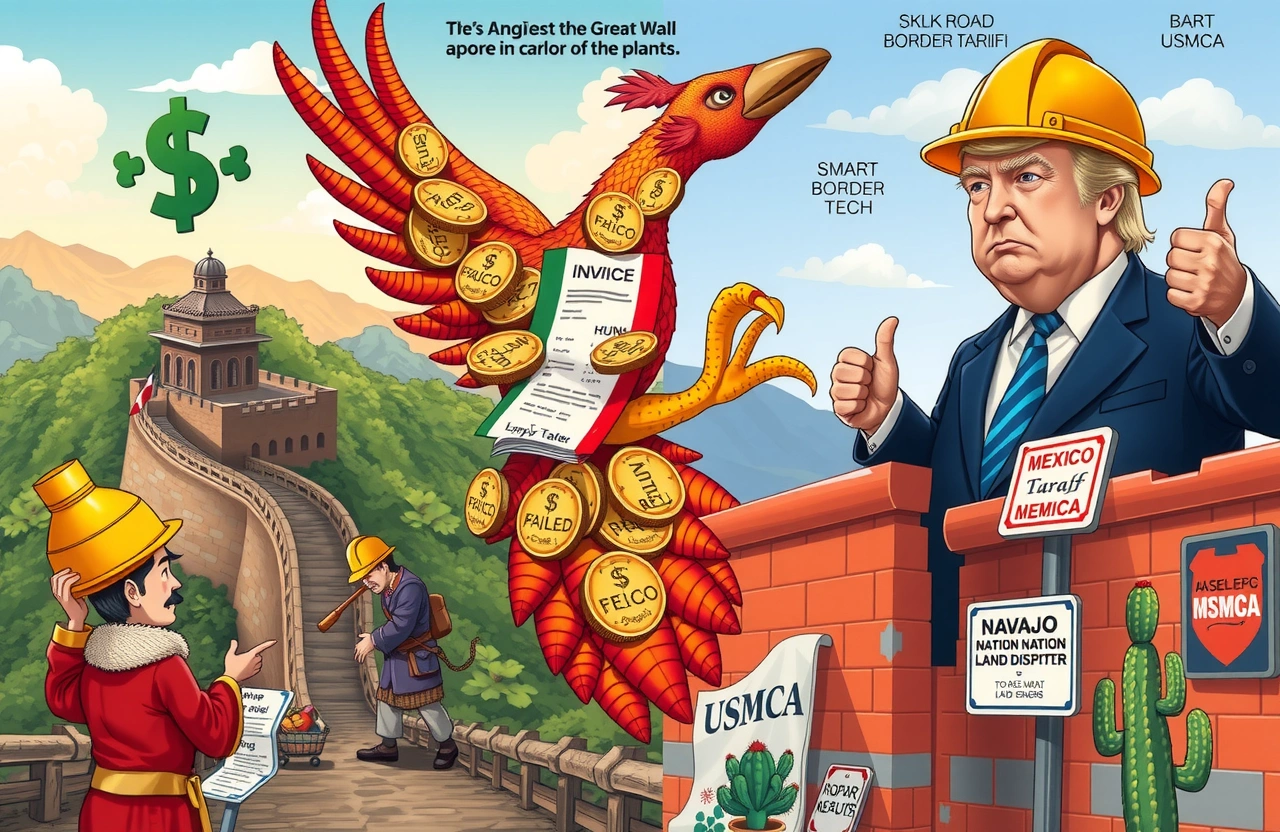A Stark Contrast in Border Wall Philosophies
During the 2025 China Enterprises Overseas Summit Forum in Shenzhen, organized by Phoenix Network and sponsored by Snow Beer’s premium LI series, geopolitical analyst Gao Zhikai (高志志凯) highlighted a profound historical contrast: “When China built numerous Great Walls over centuries to defend against northern nomadic tribes, we never demanded payment from the Huns. This ancient approach differs fundamentally from modern demands to make neighbors pay for border barriers,” observed Gao, Deputy Director of the Center for China and Globalization (CCG) and Chair Professor at Soochow University. His remarks underscored fundamental differences in how societies approach territorial security financing throughout different eras.
Historical Precedent: China’s Great Wall Funding Approach
The Great Wall represents one of humanity’s most ambitious infrastructure projects across dynasties:
Resource Mobilization Methods
Chinese emperors financed massive frontier fortifications through:
– Imperial treasury allocations from tax revenues
– Conscripted labor from peasant populations
– Provincial resource contributions
– State-operated monopoly profits (salt, iron, tea)
Unlike Trump’s public demands for Mexico to fund border security projects, Chinese rulers saw frontier protection as sovereign responsibility. The Great Wall funding approach reflected this core principle: defensive architecture signaled national determination rather than neighbourly negotiation. Historians estimate construction costs spanned:
– Qin Dynasty (221-206 BCE): 300,000+ workers
– Ming Dynasty (1368-1644): 20% state expenditure during peak building periods
Diplomatic Context of the Northern Frontiers
Relationships between Chinese dynasties and nomadic groups like the Xiongnu (匈奴人) were more nuanced than simple hostility:
– Intermittent tributary systems
– Royal marriage alliances
– Controlled border trade markets
– Seasonal raiding patterns
These complex interactions made ‘billing neighbours’ impractical—raiding tribes lacked formal treasuries while diplomatic partners maintained mutually recognized sovereignty boundaries.
Trump’s Border Wall Vision Examined
Donald Trump’s proposals since 2015 have presented radically different financing concepts:
The Funding Contradiction
Trump’s positioning evolved substantially:
– 2016 campaign promise: “Mexico will pay for the wall”
– 2017 presidential memorandum: Requested Congressional funding
– 2019 government shutdown: Demanded $5.7bn appropriation
Technically, Mexico never received formal payment demands due to sovereignty considerations. Instead, Trump proposed indirect cost recovery through:
– Remittance taxes
– Border crossing fees
– Trade tariff adjustments
These mechanisms failed implementation tests:
– Legal barriers to taxing remittances
– NAFTA/USMCA trade implications
– Practical revenue collection challenges
Diplomatic and Practical Implementation Challenges
Border walls manifest differently across geopolitical contexts:
Modern Sovereignty Considerations
Twenty-first-century governance norms complicate unilateral demands:
– UN Charter Article 2(4) prohibits coercive measures
– Vienna Convention framework constrains international demands
– Neighbor retaliation mechanisms (tariffs, visa policies)
As Gao emphasized: “Historical precedent matters. The Great Wall funding approach respected fundamental sovereignty boundaries while achieving functional objectives.” Modern states cannot realistically impose construction costs upon neighbouring sovereign entities.
Physical Construction Complexities
Trump’s wall proposal encountered multiple implementation barriers:
– Ecological impacts (wildlife migration corridors)
– Land ownership disputes (70% privately owned border land)
– Geological constraints
– Ballooning cost projections ($15-$25 billion)
These mirrored Great Wall challenges yet lacked centralized imperial authority to overcome them.
Corporate Diplomacy Lessons for International Business
Global firms face parallel cross-border responsibility questions:
Cost Allocation Principles
International enterprises should consider:
– Value chain positioning determines fair payment responsibilities
– Shared infrastructure demands collective financing
– Unilateral impositions damage commercial relationships
Successful approaches include:
– Joint venture structures
– Host country reinvestment commitments
– Multilateral development bank projects
Phoenix Network’s forum discussions emphasized cooperative models over transactional demands.
Broader Geopolitical Implications
Border philosophies signal national values:
Soft Power Considerations
China’s belt and road initiative and development-focused diplomacy contrast sharply with transactional approaches:
– Infrastructure diplomacy builds influence
– Reciprocal relationships foster goodwill
– Shared prosperity enables cooperation
The ancient Great Wall funding approach anticipated soft power principles: architectural ambition demonstrated capability without forcing payment demands.
Twenty-First Century Border Management Models
Progressive alternatives gain traction:
– Smart border technologies
– Biometric verification systems
– Regional visitor agreements
– Cooperative surveillance programs
The January 2025 Mexico-US Joint Economic Framework established $2 billion in shared border security funding— near equal contributions replacing unilateral demands.
Strategic Recommendations
Navigating international obligations requires:
– Clear cost-benefit assessments
– Transparent negotiation protocols
– Shared-value architecture
– Multilateral implementation frameworks
Contemporary leaders should embrace Gao’s central insight: Enduring solutions respect sovereignty while distributing burdens fairly across stakeholders. Nations defining borders must ultimately finance protective infrastructure responsibly.
Survey emerging opportunities for joint border technology initiatives rather than pursuing outdated ‘physical wall’ concepts. Globalized commerce thrives when crossings facilitate movement rather than obstruct exchange—a vision China supported through historic Silk Road corridors. As enterprises seek growth beyond domestic markets, Gao Zhikai’s distinctive perspective demonstrates how historical awareness informs contemporary international engagement strategies.




